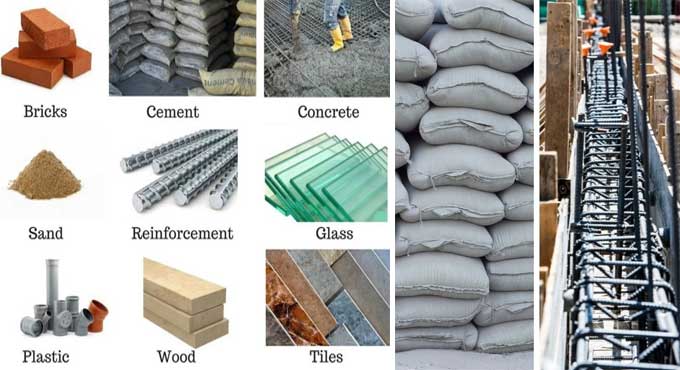
Various Innovative Materials in Construction World

High-tech, new materials are revolutionizing the building industry, creating materials that are lightweight, airy, and durable, as well as environmentally friendly. Check out our list of cutting-edge building materials for more information, and modern materials research has made significant strides in recent years.
New construction materials are available today that are truly ground-breaking. It is becoming increasingly common to use synthetic materials in construction that are stronger, lighter, and more environmentally friendly than conventional materials. New, ecologically friendly architecture is encouraged by these developments.
Building materials of the future
Transparent wooden materials
In 2016, transparent wood, the newest eco-friendly material, made its debut. But it wasn't until 2020 that the researcher who collaborated with researchers from the University of Maryland in College Park to create a method to make wood transparent declared that testing was complete and that they had achieved a stable result.
Transparent wood is at least five times stronger and lighter than glass, and it is more thermally efficient. These characteristics make it an intriguing substitute for windows made of glass or plastic.
Fiber made of carbon
Carbon fiber is unquestionably a substance of the future, despite the fact that it has been utilized for a while in a number of sports. However, this innovative material is rapidly being used in the construction industry, where it is frequently necessary to combine strong and lightweight materials.
Compared to aluminum and iron, carbon fiber is 30% and 75% lighter, respectively. It is used to lighten and thin down panels, as well as to strengthen traditional building materials like bricks, reinforced concrete blocks, and wooden constructions.
Another advantage of carbon fiber reinforcement for concrete is excellent thermal insulation; nevertheless, the high cost of the material prevents its widespread application.
Concrete that can be healed by itself
Self-healing concrete has a somewhat fantastical sound to it. Innovator Henk Jonkers from Delft University of Technology first showed off a revolutionary method for using microorganisms to fix cracks in concrete in 2015.
Simple capsules were placed on the concrete, and when water came in contact with them, the bacteria within were triggered. Concrete that had broken was filled with limestone produced by bacteria and mended with moisture.
Although traditional concrete is a stable and well-known building material, its qualities are lost when it breaks. The underlying material is being modernized by several materials experts from throughout the world.
Aerogel concept
This synthetic, porous, light material is constructed of a gel, but the liquid is replaced by a gas. The result is a very solid body with a very low density and poor heat conductivity. When touched, it has a delicate polystyrene foam feel.
Aerogels may be produced using a broad variety of chemicals. It was initially made in 1931 and was invented by Samuel Stephens Kistler. He asserted that he could replace liquid with gas without causing the structure to shrink.
The earliest Aerogels were made from silica gels. Aerogels consisting of tin dioxide, chromium oxide, and aluminum oxide were the focus of Kistler's later study. Because of their high and tiny porosity, Aerogels may be used as a matrix for gathering even the smallest dust particles.
Liquid Granite material
Artificial "liquid" stone is a special liquid mixture that is sprayed on surfaces like concrete, brickwork, stone, and asphalt.
Due to the nature of the liquid, which congeals to form a tight seal, the surface is durable and attractive. Liquid granite is an environmentally friendly material since it includes safe resins, real marble fragments, and mineral fillers.
The fabrication or coatings of unique structures or interior components are regular finishing chores that use this composite material.
Solving past problems with innovative materials
Most people don't realize the significance of cement breaking. Although aesthetics are crucial, they aren't the only factor. Concrete's structural integrity will deteriorate as soon as water enters the fracture; the problem is structural, not cosmetic.
To learn more, watch the following video tutorial.
Video Source: The B1M
An environment with fluctuating temperatures makes this problem worse due to freezing and unfreezing.
The water in the crack expands during the cold winters, slightly enlarging the fissure on each side. When the ice melts in the spring, more water will seep into the cement, enlarging the gap and endangering the integrity of the structure.
While certain modern construction materials could find a place in limited markets, many cutting-edge building materials have the potential to be widely utilized.


